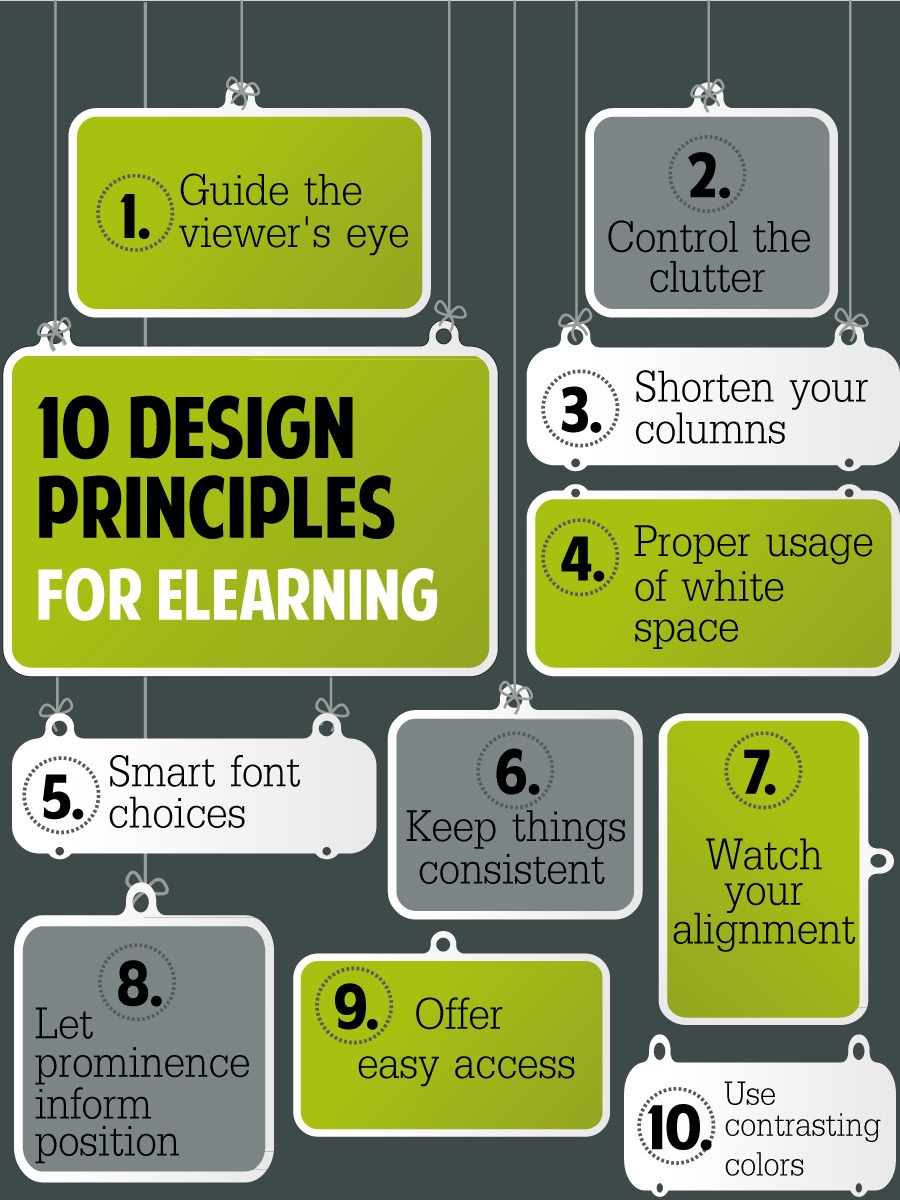Breaking Down the Principles of Design (with Infographic)
by Admin
Posted on 13-07-2023 01:10 PM

While there’s plenty of debate over how many principles of design are out there (and even what they are), there are 12 that appear regularly on the list of principles.
 These 12 principles, explained in the infographic below, include contrast, balance, emphasis, proportion, hierarchy, repetition, rhythm, pattern, white space, movement, variety, and unity (there are also some additional gestalt principles of design ). These principles are often talked about separately, but in practice, they work together to create a design that’s visually appealing and makes sense to the user. Expert designers understand how the principles support, reinforce, or even contrast with each other to create the desired effect.
These 12 principles, explained in the infographic below, include contrast, balance, emphasis, proportion, hierarchy, repetition, rhythm, pattern, white space, movement, variety, and unity (there are also some additional gestalt principles of design ). These principles are often talked about separately, but in practice, they work together to create a design that’s visually appealing and makes sense to the user. Expert designers understand how the principles support, reinforce, or even contrast with each other to create the desired effect.
https://vimar.ie/graphic-design/
The following is an excerpt from howu’s principles of infographic design principles taught by julia frenkle, who founded opus, a design agency in boston. Infographics continue to get more and more prominent in design, and successful and attractive visual communication is critical in today’s business world. It’s time to master this skill.
As you may know, it is a big part of marketing: social media images, email headers, infographics, postcards, and so on. To create assets that illustrate their brand and communicate with their audience, companies rely on graphic designers to use graphic design principles to create visual content that is highly valuable and engaging.
In graphic design and visual communication, students learn how to use different computer graphics tools to simplify complex data. Such tools include charts, graphs, diagrams, infographics, and other visual representations of data that can help people easily understand the information being conveyed. By using these graphics tools effectively, designers can make even the most complex information easy to comprehend. One way that computer graphics can simplify complex data is by breaking down large sets of numbers into meaningful patterns and trends. For example, a graph can show the sales growth of a company over time or compare the market share of several competitors in an industry.
By jennifer gaskin , jul 13, 2022 it’s a typical work day. Julie is working on an infographic for an internal training program. She goes to venngage’s library , picks a template and starts editing away. Half an hour later, she looks at her design. It looks nice, but feels just a bit off. For some reason, it doesn’t seem as good as the original template. It can pass as a good design, but julie wants to make it great. The problem is, she’s not sure how. Does this story seem familiar? have you ever been in julie’s shoes? enter: principles of design.
Implementing the Principles of Design
Understanding and implementing these ten essential design principles can greatly enhance your graphic design skills.
 By incorporating balance, hierarchy, contrast, alignment, proximity, repetition, strategic color selection, typography mastery, effective use of white space, and consistency, you can create visually stunning and engaging designs that effectively communicate your message. Remember to experiment, push boundaries, and keep up with current design trends to further refine your skills as a graphic designer.
By incorporating balance, hierarchy, contrast, alignment, proximity, repetition, strategic color selection, typography mastery, effective use of white space, and consistency, you can create visually stunning and engaging designs that effectively communicate your message. Remember to experiment, push boundaries, and keep up with current design trends to further refine your skills as a graphic designer.